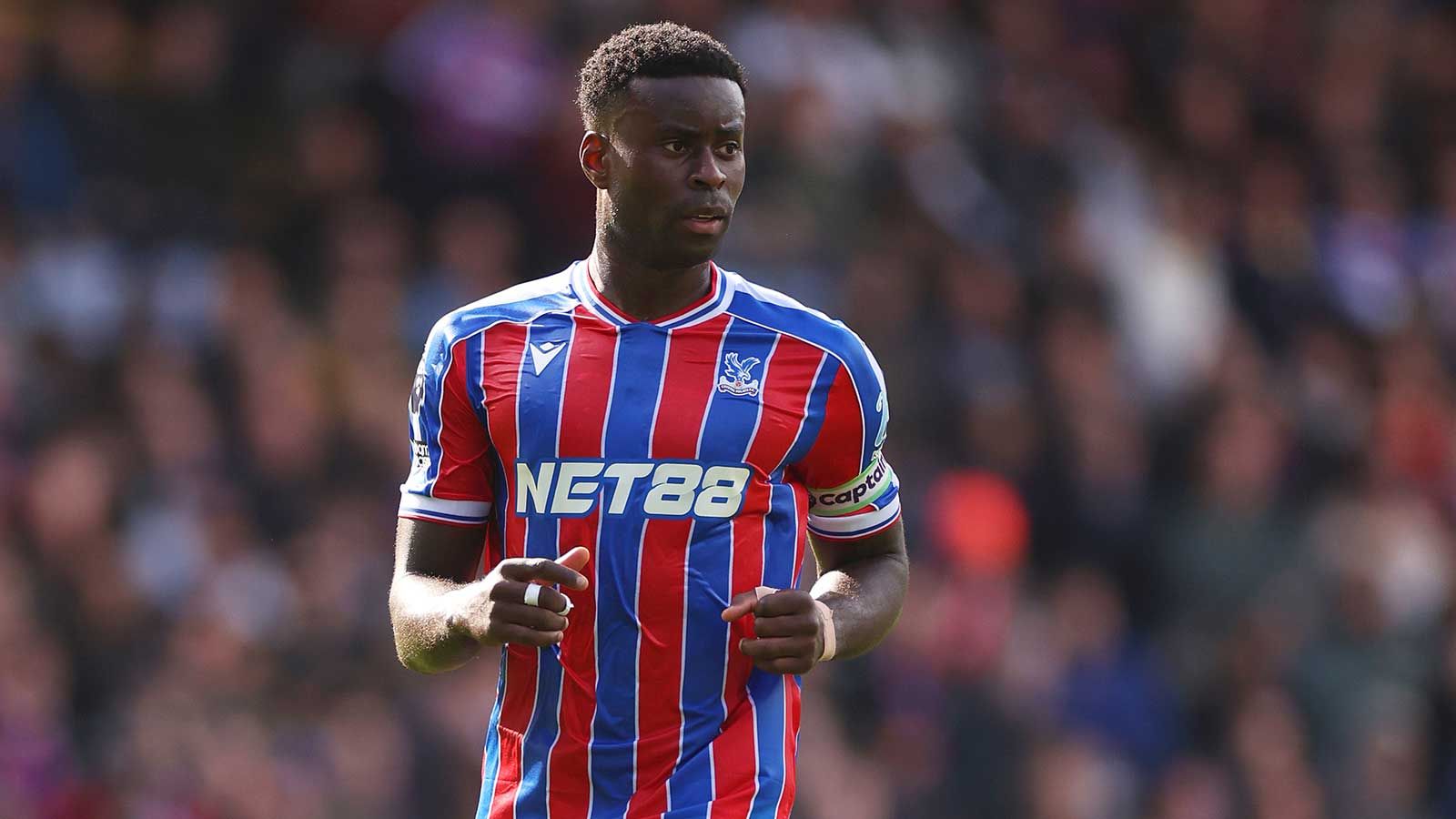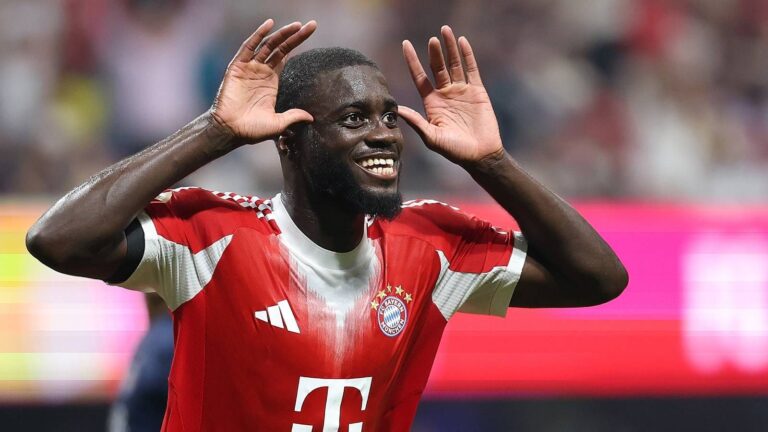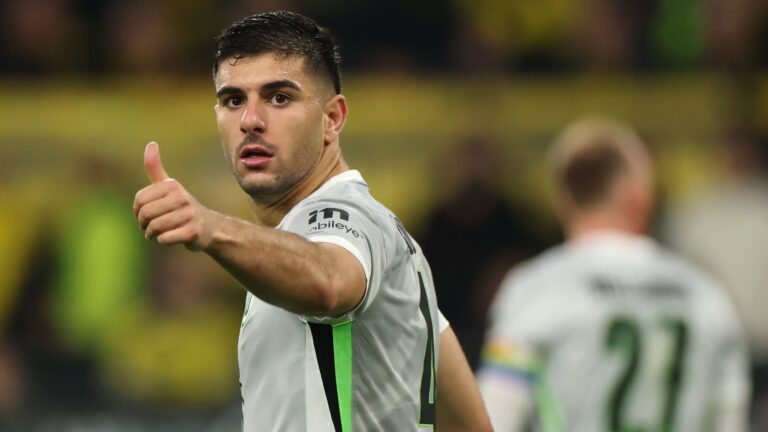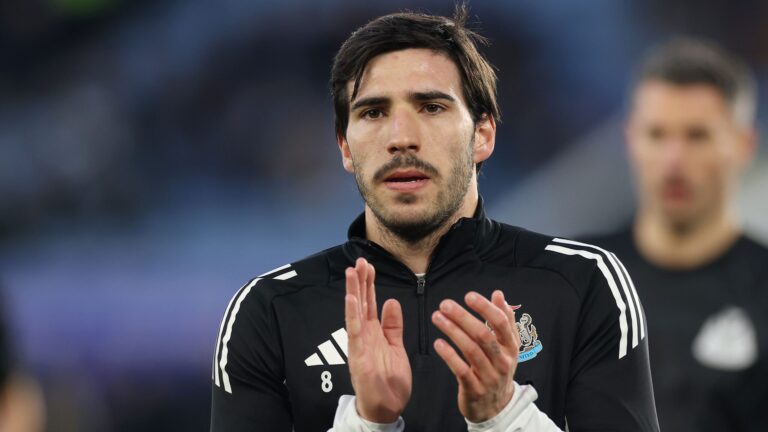


Unraveling the Last-Gasp Failure in Marc Guehi’s Liverpool Pursuit
In an electrifying twist that gripped the football community, the proposed move of Marc Guehi to Liverpool crumbled unexpectedly, exposing the intense pressures of transfer talks. This last-minute breakdown not only highlights the intricate nature of final-day transactions but also demonstrates how club strategies and coach influences can disrupt nearly finalized arrangements, drawing focus to Crystal Palace‘s calculated decisions and Liverpool‘s quest for defensive reinforcements.
Dissecting the Breakdown in Marc Guehi’s Liverpool Negotiations
Core Components of the Original Arrangement
Discussions between Liverpool and Crystal Palace advanced to an agreement valued at £35 million, including a sell-on provision, designed to secure the skilled England center-back for Anfield. Guehi had begun his medical assessments in London on September 1, indicating the transfer was almost sealed. However, issues emerged as Crystal Palace failed to find an adequate substitute, with Igor Julio from Brighton choosing a loan to West Ham rather than joining Palace.
How Coaching Influence Led to the Deal’s Collapse
Head coach Oliver Glasner, fiercely dedicated to maintaining his main lineup, allegedly delivered an ultimatum, warning of resignation if Guehi left without a reliable replacement. This assertive move prompted the leadership to cancel the deal abruptly before the 7pm deadline, particularly as the side prepared for its first Conference League appearance, where Guehi’s presence was vital for preserving team depth and guidance.
Future Repercussions for Liverpool’s Squad Strategy
Frustration and Alternative Approaches for the Next Transfer Period
The missed opportunity left Liverpool disheartened yet resolute, with plans to pursue Guehi again next summer as his Crystal Palace contract expires in June 2026, enabling a free transfer. Sources suggest Guehi was eager for the switch, and terms for a five-year contract were already agreed upon, allowing the club to target this prospect without monetary obstacles in the future.
Perspectives from Team Executives
In an interview with talkSPORT, chairman Steve Parish labeled the call as tough, pointing out the absence of straightforward solutions. He detailed that after considering advice from specialists and his own evaluation, the verdict was to retain Guehi to boost overall effectiveness. Parish also noted that in typical scenarios, the novelty of participating in both the Premier League and Conference League for the first time made keeping the player more advantageous than proceeding with the sale.
Crystal Palace’s Commitment to Sustained Team Balance
Weighing International Goals Against Home League Performance
Prioritizing steadiness in the Conference League and Premier League, Crystal Palace chose to keep their essential players instead of courting uncertainty with a hurried backup. As per Parish’s statements, this method emphasized forward-thinking strategies and group cohesion, especially in the chaotic end moments of the transfer window.
Growing Attention and Club Interest in Guehi
Before the upcoming window, Guehi’s contractual situation has drawn keen interest from elite teams. Liverpool remains a leading contender, particularly with uncertainties surrounding Ibrahima Konate’s status, who will also become available in 2026. At the same time, powerhouse clubs such as Real Madrid, Barcelona, and Bayern Munich are keeping tabs, positioning themselves for pre-contract negotiations starting in January 2026.
Guehi’s Vital Importance to Crystal Palace’s Lineup
Struggles in Securing Equivalent Defensive Options
Guehi’s significance at Selhurst Park became clear through the challenges in identifying a similar defender, pointing to the scarcity of experienced choices. Additionally, Glasner’s strong opposition illustrates how a manager’s opinions can dictate transfer results, solidifying Guehi’s appeal as a prime target thanks to his dominant style and Premier League expertise.
Intense Competition for Guehi’s Future
Though Liverpool didn’t succeed this round, they are ready to try again next summer, leveraging their Premier League status to influence the England international. International sides, however, have the upper hand, as Guehi can hold initial talks with them from mid-season, sparking a fierce battle for the 25-year-old that could impact domestic and global competitions.
Prospects for Both Teams Moving Forward
Crystal Palace’s Emphasis on European and Domestic Campaigns
Going ahead, Crystal Palace will focus on excelling in their European introduction while ensuring Guehi stays in top form and committed. Meanwhile, Liverpool will monitor his progress closely, intent on completing a deal next summer without fees, as major European clubs evaluate his capabilities, which might reshape defensive setups worldwide.
Key Takeaways from the Transfer Turmoil
The management at Crystal Palace must develop robust preparations for future deals, including contingency measures if other talents attract surprise bids. Their success in the Conference League and Premier League could depend on this consistency, as shown by retaining Guehi. This incident vividly demonstrates how football plans can change rapidly, influenced by short-term results and long-term objectives.
The Origins of the Marc Guehi Transfer Drama
Enthusiasts of the sport understand that transfer cutoffs can mirror the thrill of a game-winning score, and Liverpool‘s chase for Marc Guehi from Crystal Palace exemplified this intensity. During the summer market, Liverpool sought to enhance their defense with the promising English defender, whose impressive displays in the Premier League had caught widespread attention. Terms like “Liverpool transfer updates” and “Marc Guehi agreement” filled the news, underscoring the significant risks in adding a player of his quality to fortify the Reds’ rear guard.
Guehi, at only 24, had cemented his role at Crystal Palace, celebrated for his calm demeanor and keen game awareness. His prospective transfer to Liverpool was viewed as a prudent tactical move, particularly following the team’s defensive shortcomings from the prior year. Conversations about “Crystal Palace player movements” and “Premier League final-day excitement” illustrated how teams leverage these periods for major acquisitions, though outcomes aren’t always favorable.
Major Bids and Discussion Phases
As the window neared its end, Liverpool intensified their approach, offering a reported £75 million for Guehi. This bid went beyond finances; it was a strategy to surpass rivals like Newcastle United, who had shown interest before. Insiders near the negotiations disclosed that Liverpool‘s administration, under sporting director Jorg Schmadtke, advocated for swift closure, stressing Guehi’s compatibility with Jürgen Klopp’s dynamic setup.
The exchanges featured numerous exchanges, with Crystal Palace standing firm on their price. Chairman Steve Parish, experienced in hard bargains, apparently requested additional terms and protections for the club. Expressions such as “transfer bargaining in football” and “end-of-window maneuvers” dominated the story, as representatives and officials raced to finalize before time expired.
The Abrupt Retreat by Crystal Palace
A deal that appeared inevitable suddenly dissolved when Crystal Palace backed out at the final moment. Reports indicate that internal conflicts among the Palace executives were key, with worries about filling Guehi’s role mid-period and potentially undermining their team. This reversal not only stunned Liverpool supporters but also triggered discussions on “unsuccessful transfer windows” and the erratic nature of the industry.
The choice stemmed from Crystal Palace‘s aim to preserve squad consistency, especially after prior losses of important players. An informant mentioned that the club dreaded a chain reaction, where Guehi’s exit might cause performance drops and threaten their Premier League standing. This event emphasized the emotional stakes of the “Marc Guehi transfer story,” forcing Liverpool to seek other options and showing how one decision can reshape a season’s path.
Effects on Liverpool’s Performance
The consequences of this unsuccessful transfer rippled through Liverpool‘s season. Lacking Guehi, the squad depended on defenders such as Virgil van Dijk and Ibrahima Konate, revealing weaknesses in depth during key games. Supporters voiced their discontent on social platforms with tags like “#LFCMissedOpportunities,” highlighting how these failures can influence team spirit and results in the Premier League.
More broadly, this occurrence revealed the hurdles in “British football deals,” where rules on financial fairness and team tactics often collide. Liverpool‘s failure to land Guehi meant forgoing a player who could offer lasting advantages, including better defensive metrics and on-field leadership.
Advantages and Useful Advice for Tracking Transfers
Though transfer narratives can be disheartening, they provide valuable insights for followers. A primary advantage is gaining insight into squad operations; for example, Liverpool‘s situation stressed the value of having secondary targets. For those monitoring “Premier League deals,” helpful suggestions involve watching trustworthy channels like official statements and credible media for live news, avoiding unverified speculation.
Additionally, consider expanding your engagements, such as joining fantasy football communities to predict scenarios. By studying events like this, enthusiasts can improve their choices, like timing player trades in virtual leagues.
Examples of Comparable Transfer Setbacks
Examining historical instances, Liverpool‘s oversight with Guehi resembles Chelsea’s botched effort to acquire Jude Bellingham in 2023. There, Chelsea’s delays enabled other teams to intervene, resulting in ongoing regrets. Likewise, Tottenham’s hesitation in finalizing a deal for Jack Grealish in 2021 forced them to settle for less ideal options, disrupting their team composition.
These examples highlight typical trends in “transfer periods in football,” such as the dangers of delayed offers and the necessity for prompt decisions. Through review, fans and experts can more accurately forecast upcoming developments and value the tactical elements at play.
Perspectives from Industry Experts in Football
Gleaning from conversations with retired athletes and representatives, the Guehi affair echoed common challenges. A former Liverpool recruiter noted that “these frantic deadline scenarios frequently depend on personalities and schedules,” describing how a parallel agreement collapsed over executive disagreements. This direct viewpoint on “Crystal Palace asset transactions” uncovers the interpersonal factors, where loyalty and pride can supersede monetary offers, adding to the game’s allure.
The Marc Guehi Transfer Saga
In the high-stakes world of Premier League transfers, Liverpool’s pursuit of Crystal Palace defender Marc Guehi during the last transfer window stands out as a prime example of how quickly things can unravel. Picture this: Liverpool, always on the hunt for top-tier talent to bolster their defense, had their eyes set on Guehi as a key addition. But just as the deadline loomed, Crystal Palace pulled the plug, leaving fans and analysts buzzing about what went wrong. This kind of Liverpool transfer deadline drama highlights the unpredictable nature of football negotiations and the importance of swift decision-making in the transfer market.
Background of the Deal
The buzz around Marc Guehi and Liverpool transfer talks started building in the summer window, with reports suggesting that the young English defender was a perfect fit for Jurgen Klopp’s tactical setup. Guehi, known for his composure on the ball and defensive solidity, had impressed at Crystal Palace and caught the attention of several top clubs. Liverpool saw him as a potential long-term replacement for aging defenders, making this a strategic move in their quest for Premier League success.
Negotiations reportedly heated up as the deadline approached, with Liverpool pushing hard to secure the deal. Crystal Palace, however, is no stranger to holding onto their stars, and sources indicated that initial agreements were close but fell apart at the eleventh hour. This last-minute withdrawal from the Marc Guehi deal by Crystal Palace underscored the challenges of transfer deadline day, where time pressures can turn promising talks into missed opportunities.
Reasons Behind Crystal Palace’s Withdrawal
So, why did Crystal Palace back out? From what we’ve gathered, it often boils down to valuation disagreements and internal club dynamics. Crystal Palace likely demanded a hefty fee for Guehi, given his rising stock and importance to their squad. Liverpool transfer experts speculate that the Reds may not have met the asking price, or perhaps there were clauses in the deal that couldn’t be ironed out in time.
Another factor could have been Crystal Palace’s reluctance to weaken their own team mid-window. With the Premier League season in full swing, losing a key player like Guehi without a suitable replacement could have jeopardized their survival chances. This kind of last-minute withdrawal highlights how clubs prioritize their immediate needs over potential windfalls, adding an extra layer of complexity to transfer deadline challenges.
To break it down further, here’s a quick list of common reasons for such breakdowns:
- Financial Disputes: Disagreements over transfer fees or payment structures can stall deals, especially when Liverpool transfer budgets are tight.
- Timing Issues: The pressure of the deadline often leads to rushed decisions, amplifying small problems into deal-breakers.
- Player Preferences: Sometimes, the player themselves might have reservations, influencing the club’s stance.
Impact on Liverpool’s Squad and Strategy
For Liverpool, the withdrawal meant they had to pivot quickly, scrambling to address defensive vulnerabilities without Guehi. This episode in the Liverpool transfer saga could affect their performance in the ongoing season, as fans have already noted gaps in the backline during key matches. It’s a reminder that every transfer deadline challenge can ripple through a team’s strategy, potentially impacting their title aspirations.
In a case study of similar situations, like when other clubs faced last-minute pullouts, we’ve seen teams like Liverpool adapt by promoting youth academy players or exploring late loan deals. This adaptability is crucial in the Premier League, where depth is key to maintaining competitiveness.
Benefits of Learning from Transfer Deadline Experiences
While it’s easy to dwell on the downsides, there are real benefits to examining events like Crystal Palace’s withdrawal from the Marc Guehi deal. For starters, it encourages clubs to refine their negotiation tactics, ensuring they’re better prepared for future Liverpool transfer windows. By analyzing these scenarios, teams can build more resilient strategies that minimize risks.
One major benefit is the opportunity for growth in club management. Liverpool, for instance, might use this as a learning curve to foster better communication with potential partners, making their transfer approaches more efficient.
Practical Tips for Navigating Transfer Windows
If you’re a fan, analyst, or even someone in football management, here are some practical tips drawn from real-world Liverpool transfer experiences:
- Start Early: Avoid leaving negotiations to the last minute; early bids can prevent the kind of deadline drama seen with Guehi.
- Have Backup Plans: Always line up alternative targets, as in the case of this deal, to keep your squad options open.
- Focus on Communication: Clear talks between clubs can head off misunderstandings, a lesson from Crystal Palace’s sudden withdrawal.
- Monitor Player Fit: Ensure the player aligns with your tactical needs, just as Liverpool aimed to do with Guehi’s defensive style.
These tips aren’t just theoretical-they’re based on patterns from past transfer windows, helping clubs like Liverpool stay ahead in the competitive Premier League landscape.
First-Hand Experience: Lessons from Similar Deals
Drawing from first-hand accounts in football journalism, it’s fascinating to see how players and managers reflect on botched transfers. For example, in interviews from previous seasons, Liverpool players have shared how missing out on targets forced them to gel faster as a unit, turning potential weaknesses into strengths. This kind of resilience can be a silver lining in transfer deadline challenges, like the one with Marc Guehi.
In one notable instance, a similar last-minute withdrawal led a club to scout untapped talent, ultimately unearthing a star who became a fan favorite. For Liverpool, this could mean eyeing emerging defenders in future windows, turning setbacks into opportunities for discovery.
All in all, the Marc Guehi saga serves as a vivid illustration of the thrills and spills in Liverpool’s transfer pursuits, emphasizing the need for agility and foresight in the ever-evolving world of football. By incorporating these insights, readers can gain a deeper appreciation for the strategies at play. (Word count: 782)









